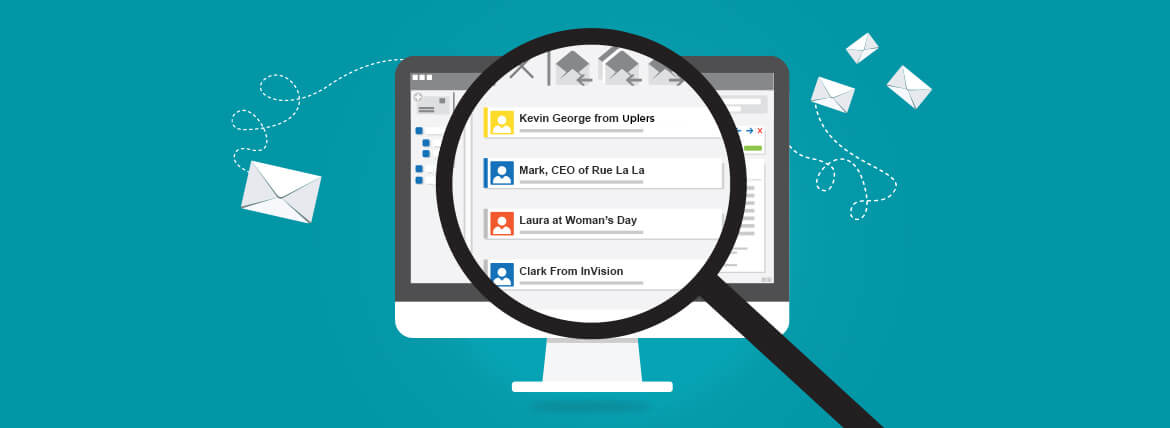Your email subscribers recognize you according to the from name or sender name. It significantly influences the recipient’s decision to open the email. While your from name should be familiar for the subscriber, you should be able to harness the power of your brand name and marketing efforts.
When it comes to email open rates, the most important aspect is whether the recipients trust the sender as it informs them about who sent the email. It is as important as the subject line that engages the subscriber to learn more on what the email is all about.
That said, let’s delve deeper into how to choose a name or title that is recognizable and at the same time, encourages the subscriber to open the email.
1. Humanize your From Name
Add a human touch to the from name by adding the name of the company executive, founder, or spokesperson. Some brands often take the risk of not including the name of their brand in the from name to include the person’s name. However, subscribers might not be aware about the names of CEO or sales representative. The safest bet is to include the company name as well as the name of the professional for better engagement.
For example, Social Media Examiner brings a human voice to their emails by sending emails from a sender name that includes the brand name as well as their founder’s name. Usually, it is better to use the brand name first and then the professional’s name. However, if you use the name of the professional first, make sure that it is not too long.
Though Rue La La and InVision have used the representative’s name first, it would not hamper their engagement as the brand name does not get truncated.

2. Inform the reader about the purpose of the email
Yes, your from name can also let the reader know what the email is all about. You just need to add the suitable description after the brand name. According to the brand, you can add specific tags to go with the brand name. For example: If you are a travel company, you can send an email from the sender name: “Brand_Name Travel Recommendations”. When the recipients will check the from name, they will instantly get to know what the email is all about.
Here is another example for your better understanding. Chubbies has included more information about the kind of products they have talked about in the email.

3. Let the reader know about the department
Including a department identifier to the sender name informs the recipient whether the email is from an operational department or product department. By doing so, the subscribers can get a clear idea on how important the email is. When brands send emails as a part of separate opt-in or communication, it becomes particularly important.
As an instance, CottonOn & Co. sends the email highlighting the perks with a different from name than the one with kids’ products.

4. Give special consideration to automated emails
Triggered emails have a better open rate as the subscriber is looking forward to these emails. Whenever the prospect makes a purchase, send a receipt email with sender name as Brand_Name Order Receipt. Any shipping or dispatched notification should be deployed from the sender name as Brand_Name Notification. Take similar approach for emails requesting product reviews or feedback. For cart abandonment or browse abandonment emails, you can have the sender name as Brand_Name – Cart reminder.
5. Focus on occasion-based marketing
During the holiday season, you can use a seasonal tag to increase the likelihood of getting your emails opened.
Here’s an example of Sephora’s Black Friday email that has the same mentioned in the from name too.

Best Practices of Using the From Name
1. Make sure your from name is not too long.
Brand names with more than 15 characters should avoid using from name extensions as it will not get displayed in the inbox. These brands can do away with designators such as “Ltd.”, “LLC”, and “Corp.”. It is advisable that you do not use any abbreviation that is not used on other marketing channels so that you do not hamper the brand credibility. Consulting with a legal expert can help in this process to ensure compliance with naming regulations and protect your brand legally.
2. Set up BIMI
Use Brand Indicators for Message Identification as it allows the logo to be displayed next to the email from name in the inbox. Your subscribers would find it easier to trust the brand by doing so, thereby increasing engagement and deliverability.
3. Use it prudently
Anything in excess is bad – This phrase is true even for from name extensions. Use it selectively so that it can have the desired impact on the recipients. Your audience should not get bored seeing the same kind of from name each and every time.
4. Always test
Testing is important because you got to figure out what kinds of from name extensions resonate the most with your subscribers. Get your A/B testing right so that you can make the most of this strategy.
Wrapping Up
No matter which from name extension you use, it should reflect your brand and be familiar enough for the subscriber. Refrain from using noreply from addresses and try to use friendly and personal sender names that would work best for your target audience.






Kevin George
Latest posts by Kevin George (see all)
How to Grow Your Email List Using Facebook
Switching from an ESP to Marketing Automation: Make the Move Now